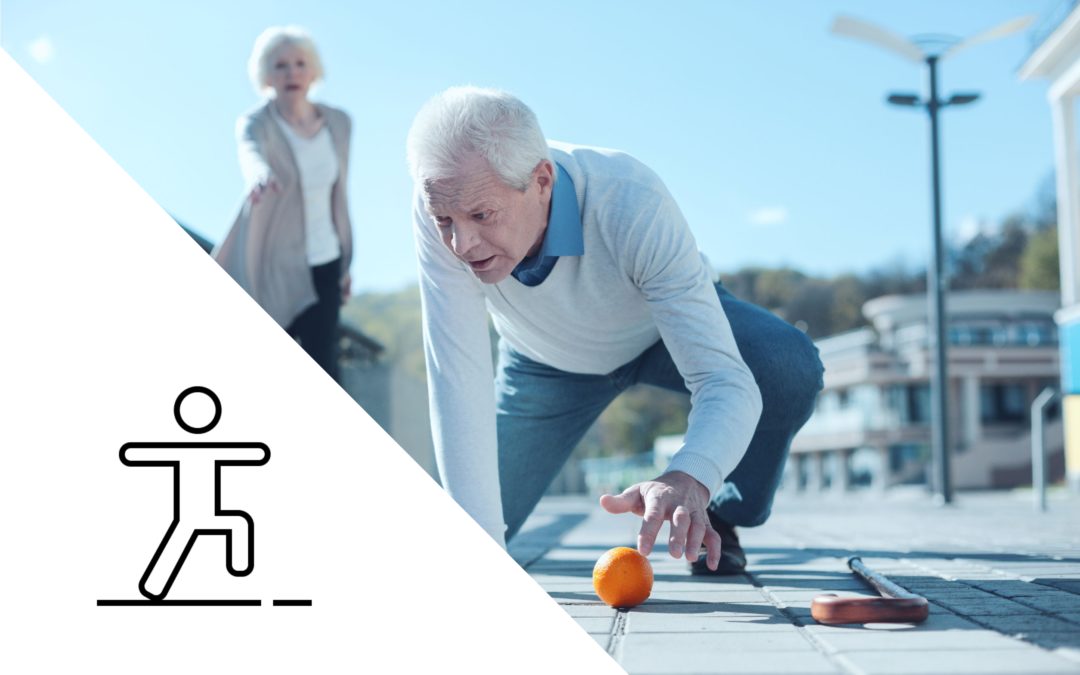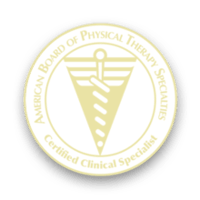Unfortunately, many older adults either ignore or deny that they may have a balance problem. In the first place, there is a fear of looking weak or “old”. On the other hand, some people are just to busy (enjoying retirement 🙂 ) to notice they have a problem. The reality is, if you are over the age of 65, YOU HAVE A BALANCE PROBLEM and you ARE at risk of falling!
Facts about falls
1 in 4 people over the age of 65 fall each year. Falling once, doubles the chance of falling again.
Over 800,000 people are hospitalized each year due to a fall.
3 MILLION older adults are treated for fall related injuries each year.
In 2015, medical costs for fall related injuries reached 50 billion dollars
Despite these staggering facts, falls can be avoided. Let me repeat, YOU could eliminate your chances of becoming a statistic.
Grandpa Gordan
When I was young, my grandpa was my role model and friend. He was super smart, caring, kind, and…..stubborn. Often times, I can recall finding bruises or scratches on him. After a thorough “interrogation”, it would become clear, he had fallen. Did I mention he was also proud?
“Walkers are nonsense. I am not crippled”
This is how our conversations always ended following my gentle suggestions. 🙂
First of all, to a proud, successful businessman, any sign of aging was a sign of weakness. Second, asking for help was out of the question. And most important, admitting to a fall surely meant taking up permanent residence in a nursing home.
His story, and his fears, are a common reality among older adults. By the grace of God, he never broke a hip. However, there was the time he ended up with a black eye after a fall while standing ON his kitchen counter to change a light bulb. And the time he fractured 3 ribs climbing into the tub without holding on. And finally, the countless bruises hitting something that “shouldn’t have been there in the first place”.
Who is at risk for falling?
Many older adults consider themselves super healthy and active. Maybe, you are an avid golfer, racquetball player, tennis player, or runner. You often think, “I am not a typical older adult”. Along these same lines, a role as a volunteer, mother, father, son, or daughter keeps you “young”. Regardless of your health status, aging IS inevitable. As the body ages, many systems involved in maintaining balance become impaired.
Eyesight: Loss of peripheral vision and depth perception
This makes it hard to judge how high a step is or an obstacle on the ground. This is necessary to clear the foot and not catch the toe. Loss of peripheral vision makes it harder to see people as they approach, or obstacles.
Touch: Decrease sensitivity to touch.
Sensory loss decreases the ability to feel the ground and recognize slight changes in the surface under the feet.
Bones: Less mineralized and more brittle
Hence, more chance of a fall related injury
Brain: Fewer brain connections
This decreases reaction time and makes it difficult to focus on two things at the same time. For instance, walking and looking for a friend in a crowded area.
With this in mind, is it possible you may have a balance problem? Do you ignore that little bit of dizziness you feel when you stand up from a chair? Pretend you “wanted” to sit back down when you didn’t make it out of the chair on the first try? Reach for walls and furniture (just in case…)? Or (grandpa Gordan’s go-to) use your golf clubs to steady yourself when walking up to the tee?
If so, you may have a balance problem and you are at risk of falling. How much are you willing to risk by denying or ignoring the facts? Your independence? Time golfing with your friends? The ability to go to the beach or a nice dinner with your family? Vacations abroad? You CAN enjoy all of this and more! You CAN age gracefully, confidently doing all the things you love.
How to prevent a fall?
Step one – Know your fall risk
Answer yes or no to the following questions:
Are you confident you will NOT fall when…
- ….walking around the house?
- ….climbing stairs?
- …..bend over to pick something up from the floor?
- …..stand on a chair to reach for something?
- …..stand on tip toes to reach for something overhead?
- …..sweep the floor?
- ……walk outside the house to a car parked in the driveway?
- …..get into or out of a car?
- …..walk across a parking lot into a store?
- …..walk up or down a ramp?
- …..walk in a crowded mall?
- …..walk up or down a ramp?
- …..are bumped into by people as you walk through the mall?
- …..step onto or off of an escalator holding onto a rail?
- ……step onto or off of an escalator while holding on to parcels? (meaning you cannot hold on to a rail)
If you answered no to 5 or more of these statements you are at risk for falling.
Step two – Schedule a balance assessment
A neurologic physical therapist is the best healthcare professional to perform a balance assessment. Here, your therapist will identify the areas or systems in the body that may be causing the balance problems
Step three – Start treatment
Physical therapy treatment will include a variety of treatments to challenge the brain and the body. This will include skilled treatments to stimulate or improve sensation in the legs, strengthen weak balance muscles, improve reaction time, and dual task training.
Sign up for our newsletter to receive free tips and the latest information in fall prevention.







